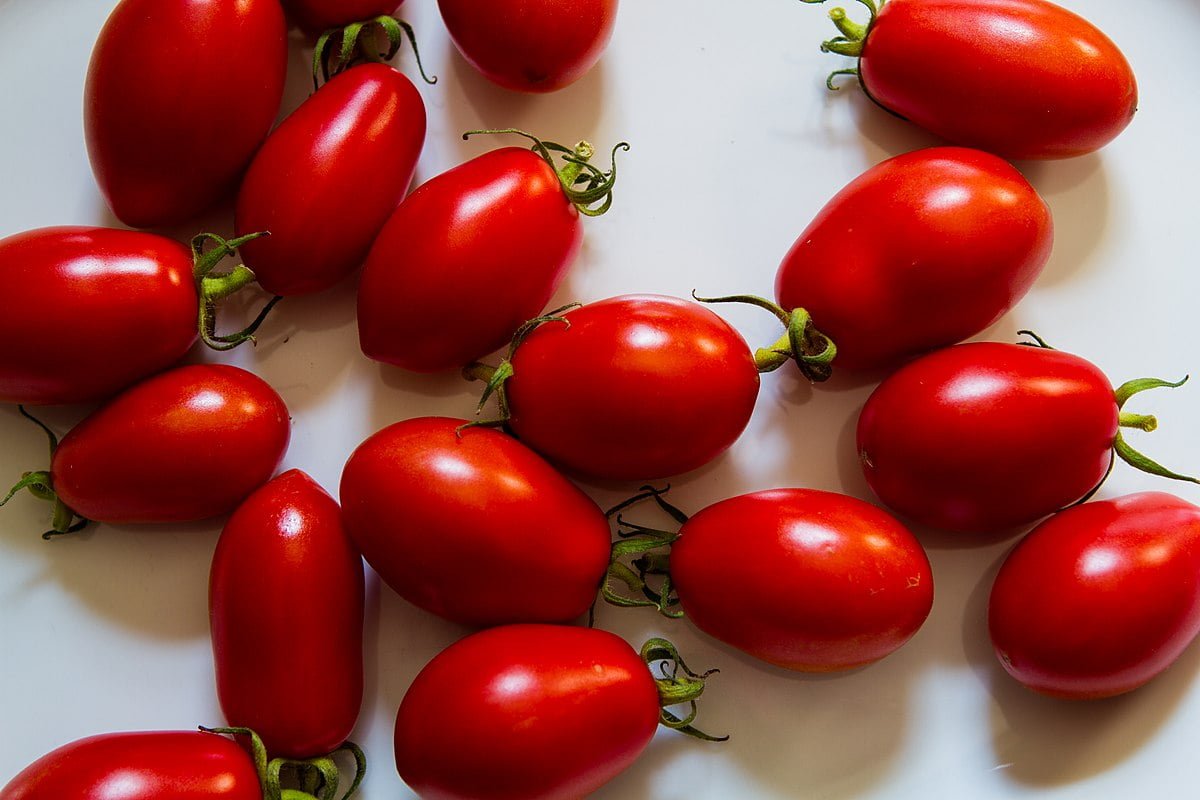San Marzano Tomatoes: The Crown Jewel of Italian Cuisine
San Marzano tomatoes, revered by chefs and home cooks alike, are often considered the gold standard for tomato sauces. Cultivated in the rich volcanic soil at the base of Mount Vesuvius, these plum tomatoes are distinguished by their elongated shape, vibrant red colour, and minimal seeds. Their sweet flavour, firm pulp, and low acidity make them an ideal ingredient for creating robust, flavourful dishes. This article explores the San Marzano tomato’s unique characteristics, growing tips, and culinary uses, offering insights into why this variety has earned its esteemed place in culinary traditions.
Origins and Distinction
The San Marzano tomato originates from the small town of San Marzano sul Sarno, near Naples, Italy, where it has been grown since the 18th century. It benefits from the Mediterranean climate and the nutrient-rich soil of the region, contributing to its unique taste and texture. San Marzano tomatoes are protected by the “Denominazione di Origine Protetta” (DOP) label, ensuring they meet strict standards regarding their cultivation and processing.
Growing San Marzano Tomatoes
Like all tomato plants, San Marzano tomatoes prefer a warm climate and a sunny location. However, they are quite hardy and can adapt to a range of growing conditions.
- Soil Preparation: They thrive best in well-drained soil that’s rich in organic matter. A pH level between 6.0 to 6.8 is ideal.
- Planting: Start seeds indoors 6-8 weeks before the last expected frost. Transplant the seedlings outdoors when they are about 6 inches tall and the danger of frost has passed.
- Care: Regular watering is critical, but avoid overhead watering to prevent disease. Mulch can help retain soil moisture.
- Harvest: San Marzano tomatoes typically mature in 80-90 days. Harvest when the fruits are firm and fully coloured.
Characteristics
- Shape and Size: San Marzano tomatoes are easily recognizable by their elongated, almost cylindrical shape, which can be up to 4 inches long.
- Flavor: They boast a sweet taste with a subtle tanginess and less acidity than other varieties, making them highly desirable for sauces.
- Texture: The flesh is thicker and meatier with fewer seeds, which contributes to a denser, richer tomato sauce.
Growing San Marzano Tomatoes
1. Planting: For optimal growth, start seeds indoors 6-8 weeks before the last frost date. San Marzano tomatoes thrive in well-drained soil with a pH of 6.0-6.8 and require full sun exposure.
2. Care: Regular watering is crucial, especially during dry periods. However, avoid over-watering to prevent root rot. Support the plants with stakes or cages to manage their height and weight as they grow.
3. Harvesting: Tomatoes are ready for harvest when they achieve a uniform red colour and firm texture. Gently twist the fruit off the vine to avoid damaging the plant.
Preservation
To enjoy the exquisite taste of San Marzano tomatoes year-round, consider canning or making tomato paste. Blanching and peeling the tomatoes before canning preserves their flavour and texture, ensuring a supply of high-quality tomatoes for your culinary needs.
Final Thoughts

The San Marzano tomato stands as a testament to the importance of terroir in agriculture, proving that the right conditions can produce an ingredient that elevates everyday cooking to an art form. By incorporating San Marzano tomatoes into your garden and kitchen, you invite a piece of Italian culinary heritage into your home. Whether you’re crafting a traditional Neapolitan pizza or a simmering pot of marinara sauce, the San Marzano tomato offers a taste of Italy that’s unmatched by any other variety.
Additional Resources
Slow Food International (www.slowfood.com): Slow Food is an organization dedicated to preserving traditional and regional cuisine and encourages farming of plants, seeds, and livestock characteristic of the local ecosystem. Their website offers insights into the importance of San Marzano tomatoes within Italian culinary traditions, including information on the DOP designation and tips for selecting authentic San Marzano tomatoes.
Cooking with Nonna (www.cookingwithnonna.com): Celebrate the rich tradition of Italian cooking with Rossella Rago and the Italian grandmothers as they share their family recipes, many of which highlight the use of San Marzano tomatoes. The website features video recipes, cooking tips, and stories that honor Italian culinary heritage.
Gardeners’ World (www.gardenersworld.com): This UK-based gardening website provides practical advice on growing tomatoes, including San Marzano. With tips ranging from seed starting to harvesting, as well as dealing with common pests and diseases, Gardeners’ World is an excellent resource for ensuring a successful tomato crop.







